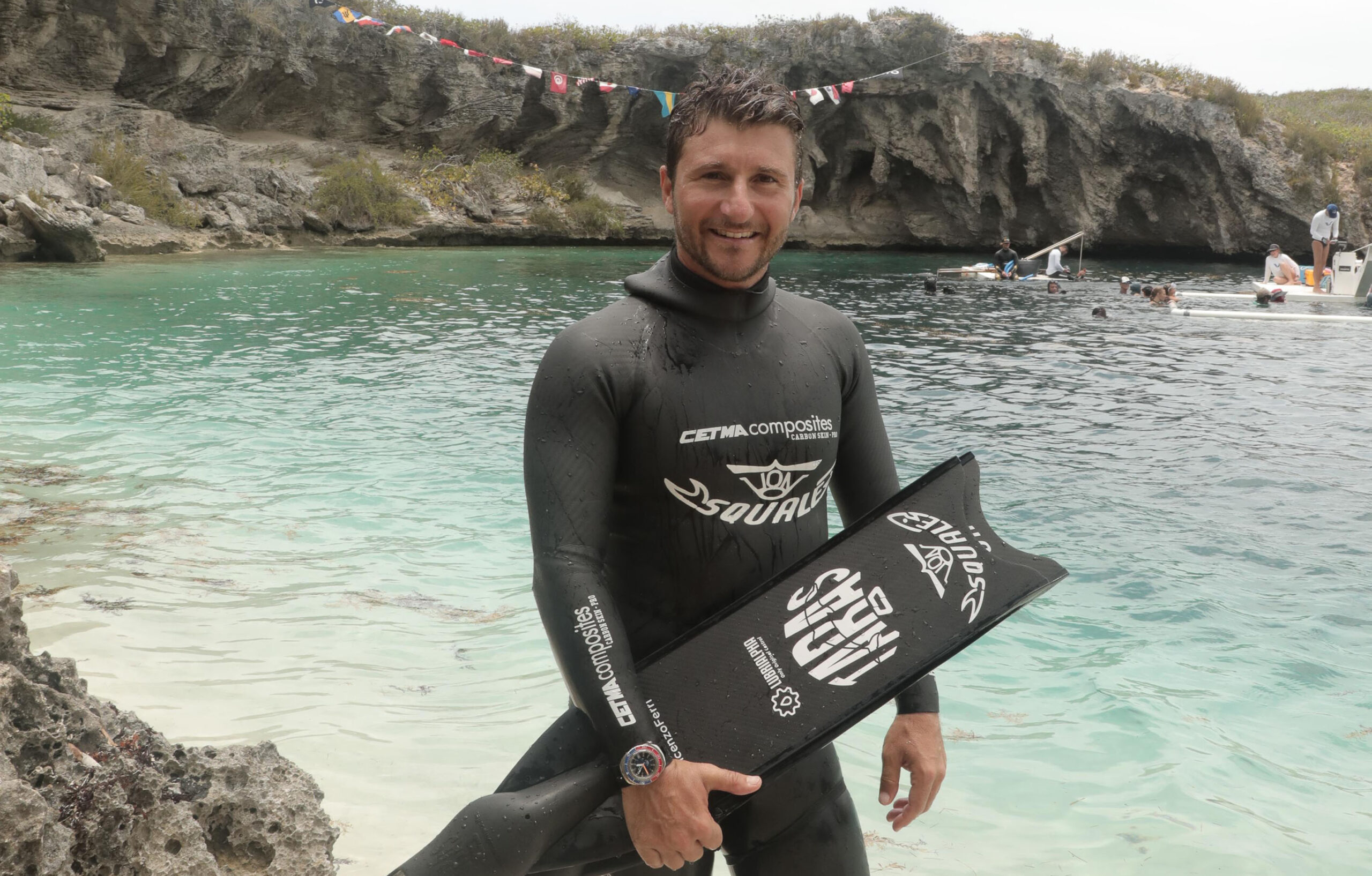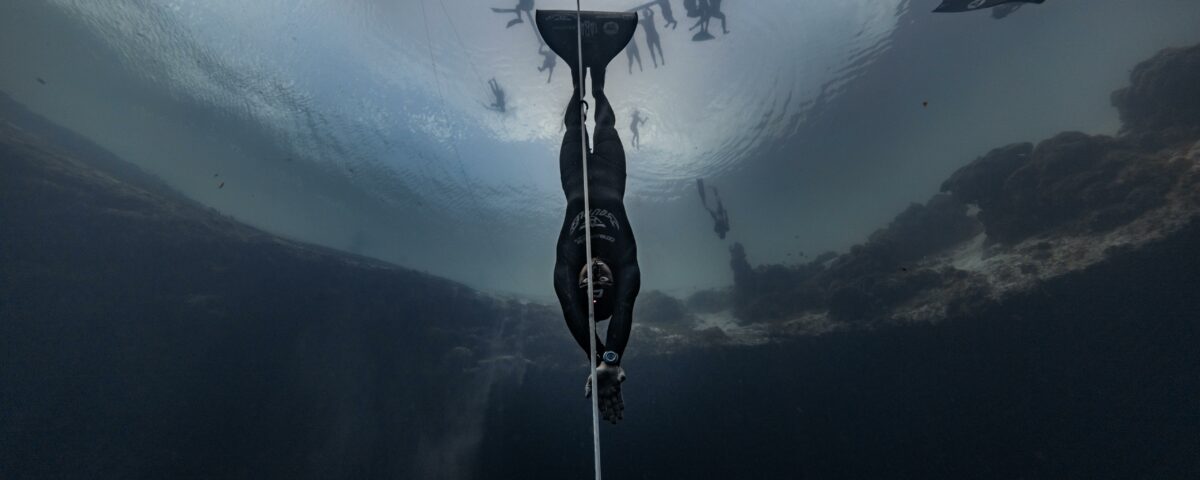My blue – Let’s talk about fins and mono

SIMONA AUTERI: I’LL TELL YOU ABOUT THE DEEP DOMINICA CUP
26 August 2024
ABSOLUTE ON GARDA: WE ARE NOW THERE!
3 September 2024The strong Neapolitan athlete has joined our team with a monthly column that will analyze the various aspects related to freediving. A wealth of experience gained during "a life" spent underwater with 6 Italian records, 6 world records, 3 silver medals for sporting merit, plus many other placings
Vincenzo Ferri
Freediving is a discipline practiced for centuries. Just think of Haggi Statti who, way back in 1913, descended to 80 meters to recover the anchor of the Regina Margherita ship.Obviously a lot has changed since those times, so much so that, in the last 20 years, the progress has been truly incredible, both in terms of the techniques used and the equipment; the latter, in fact, have evolved so much as to allow athletes to achieve performances that were unimaginable just a few seasons ago, and this has happened in the pool as in the sea, results that have given visibility and notoriety to this beautiful sport.In this first episode I would like to focus on equipment and fins and monofins in particular. Objects that have changed a lot over the last few years thanks above all to the introduction of materials that did not previously exist in these terms: composites and latest generation rubbers. Materials that have allowed the creation of models with exaggerated performances, but extremely technical and effective only if used appropriately. It's a bit like driving a Ferrari and a small car. The latter is undoubtedly easier to drive, but it will never give you the satisfaction and performance of a sports car.Going into more detail and starting with the fins, the change was more evident especially with regards to the shoes. It is no mystery that for years I have been using materials from Cetma Composites, a leader in this sector. Well, they had the intuition to "steal" them from the monofins and the results were amazing, in the form of a very significant decrease in times both in constant and dynamic.This shoe gave the possibility of moving the strength points and being able to stratify the carbon in order to fully exploit the surface of the blade, without dead points, because the shoe itself is an integral part of the whole; furthermore, by significantly shortening the length of the entire fin, which I really like, they have been made decidedly more manageable and sensitive.All these changes have also led to a revision of the hardness. If previously a fin tending towards rigidity was preferred, now all athletes, including myself, prefer soft blades to preserve the muscles during long freedives.But not only that. The technique has also undergone important changes, adapting to these newly developed tools. The stride has become much narrower, to make the tool resonate, consequently the surface that opposes the water is significantly smaller.On monos, however, the situation is totally different because, even being a more recent tool, the changes have been minor but, at the same time, have contributed to making them decidedly better performing. Also in this case the technique is of fundamental importance in order not to waste too much energy. On monofins, inclinations are the key to thrust. Being a single body with a high surface area, it is necessary to have a perfect balance so that there is a good relationship between hardness, thrust and reliability. And even in this case, athletes prefer them to be very soft so as to obtain a clean and elegant movement, to slide through the water with as little effort as possible.To conclude, I am convinced that despite all this applied technology and despite the enormous progress made, we have not yet reached the pinnacle of development, but there is significant margin to go further, to improve fins and mono in no small measure, making them even more more performing and, perhaps, adding something more that now escapes us. Companies are already working on it and I am sure that in the near future we will see some good ones.



